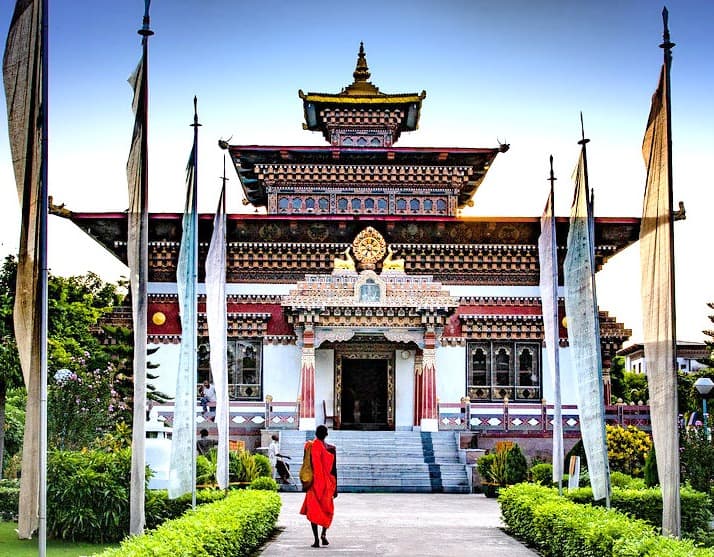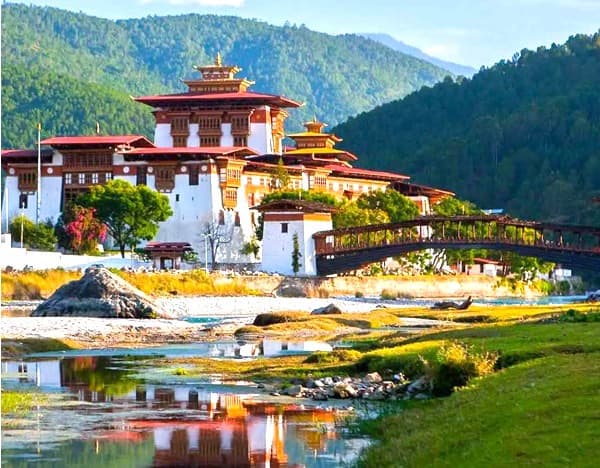Exploring the top valleys in Bhutan offers an enchanting glimpse into the heart of the Himalayas, where Bhutan's natural landscapes and rich cultural heritage converge. This Bhutan Valley travel guide invites you to discover the best valleys to visit in Bhutan, each boasting unique beauty and significance. From the spiritual heartland of the Bumthang Valley to the breathtaking vistas of the Paro Valley Bhutan, these scenic valleys in Bhutan promise unforgettable experiences. Immerse yourself in the Thimphu Valley attractions and the serene tranquility of the Haa Valley tourism, while marveling at the Punakha Valley sights and the endangered Phobjikha Valley black-necked cranes. The Ura Valley culture offers a deep dive into Bhutan's traditions and vibrant festivals, making these valleys must-visit valleys in Bhutan. Whether traveling to Bhutan valleys for adventure or cultural exploration, our Bhutan valley itineraries ensure you experience the best of Bhutan valley tours, showcasing the diverse cultural sites in Bhutan valleys and opportunities for hiking in Bhutan valleys.
When exploring the top valleys in Bhutan, Druk Holidays is your premier choice for an unforgettable journey. With our extensive experience and deep knowledge of Bhutan's unique landscapes and rich cultural heritage, we offer expertly curated tours to the best valleys to visit in Bhutan. Whether you're drawn to the breathtaking vistas of the Paro Valley Bhutan, the serene beauty of the Haa Valley tourism, or the spiritual depth of the Bumthang Valley spiritual sites, we provide a comprehensive Bhutan valley travel guide to ensure you capture the essence of each destination. Our thoughtfully crafted Bhutan valley itineraries allow you to experience the diverse Bhutan natural landscapes, from the Punakha Valley sights to the endangered Phobjikha Valley black-necked cranes. At Druk Holidays, we pride ourselves on offering personalized Bhutan valley tours that cater to both adventure seekers and cultural enthusiasts, ensuring you explore the cultural sites in Bhutan valleys and enjoy hiking in Bhutan valleys to the fullest. Choose Druk Holidays for a seamless and enriching exploration of Bhutan's most scenic valleys in Bhutan, and let us guide you on an unforgettable journey through the heart of the Himalayas.
Paro Valley
Paro Valley Bhutan is a captivating destination that offers a harmonious blend of stunning natural beauty and rich cultural heritage. As one of the top valleys in Bhutan, Paro is known for its picturesque landscapes, ancient monasteries, and vibrant traditions. Visitors to this enchanting valley can immerse themselves in the unique charm of Bhutanese culture while enjoying breathtaking views of lush fields and majestic mountains.
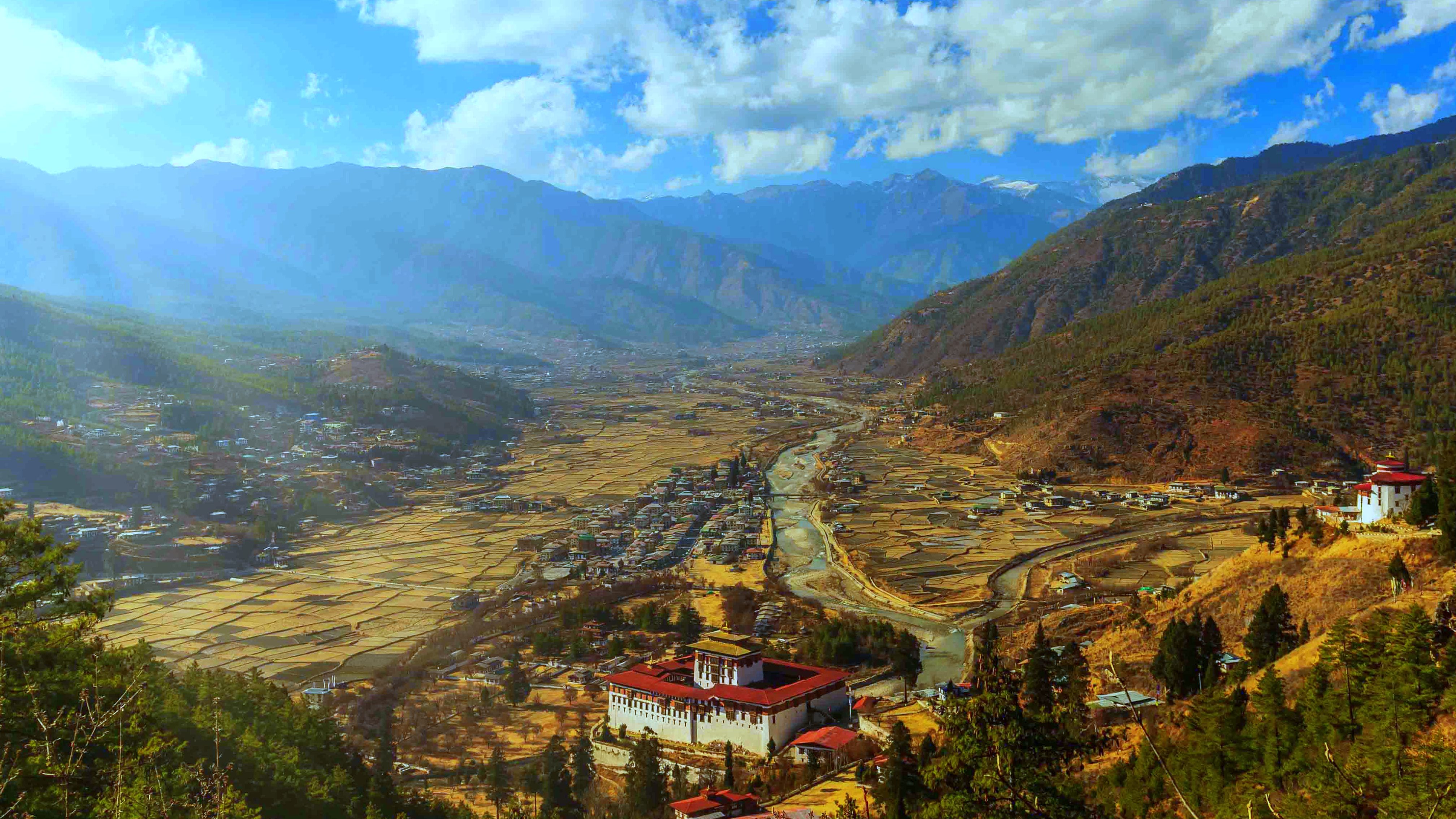
- Paro Taktsang Monastery (Tiger's Nest): Perched dramatically on a cliffside, this iconic monastery is one of the most famous valleys in Bhutan and a must-visit for spiritual seekers and adventurers alike. The challenging hike to Tiger's Nest offers stunning views of the valley below, making it a memorable experience.
- Rinpung Dzong: A historic fortress and monastery, Rinpung Dzong is a prime example of traditional Bhutanese architecture. It serves as an administrative and religious center and hosts the colorful Paro Tshechu festival, which attracts locals and tourists alike.
- Kyichu Lhakhang: One of Bhutan's oldest and most sacred temples, Kyichu Lhakhang is believed to date back to the 7th century. It is a significant spiritual site where visitors can experience the tranquility and devotion that permeate Bhutanese culture.
- Drukgyel Dzong: Although now in ruins, this fortress offers a glimpse into Bhutan's rich history and its strategic importance in defending the kingdom from Tibetan invasions. The site also provides panoramic views of the surrounding mountains.
- Paro Market: A vibrant hub of local life, the Paro Market is the perfect place to explore Bhutanese crafts, textiles, and local delicacies. It's an excellent opportunity to interact with locals and experience the valley's bustling atmosphere.
Paro Valley Bhutan is a destination that captures the essence of Bhutan's natural beauty and cultural richness. With its stunning landscapes, historic sites, and spiritual depth, Paro offers an unforgettable experience for travelers seeking to explore the best of Bhutan's natural landscapes. Whether you're hiking to the iconic Tiger's Nest or exploring ancient temples, Paro Valley promises a journey of discovery and inspiration in the heart of the Himalayas.
Thimphu Valley
As the vibrant capital of Bhutan, Thimphu Valley stands out as a unique blend of tradition and modernity. It is not only the political and economic center of the country but also a place where ancient customs and contemporary life coexist harmoniously. This bustling valley offers visitors a chance to explore Bhutanese culture, history, and the serene beauty of its natural surroundings.
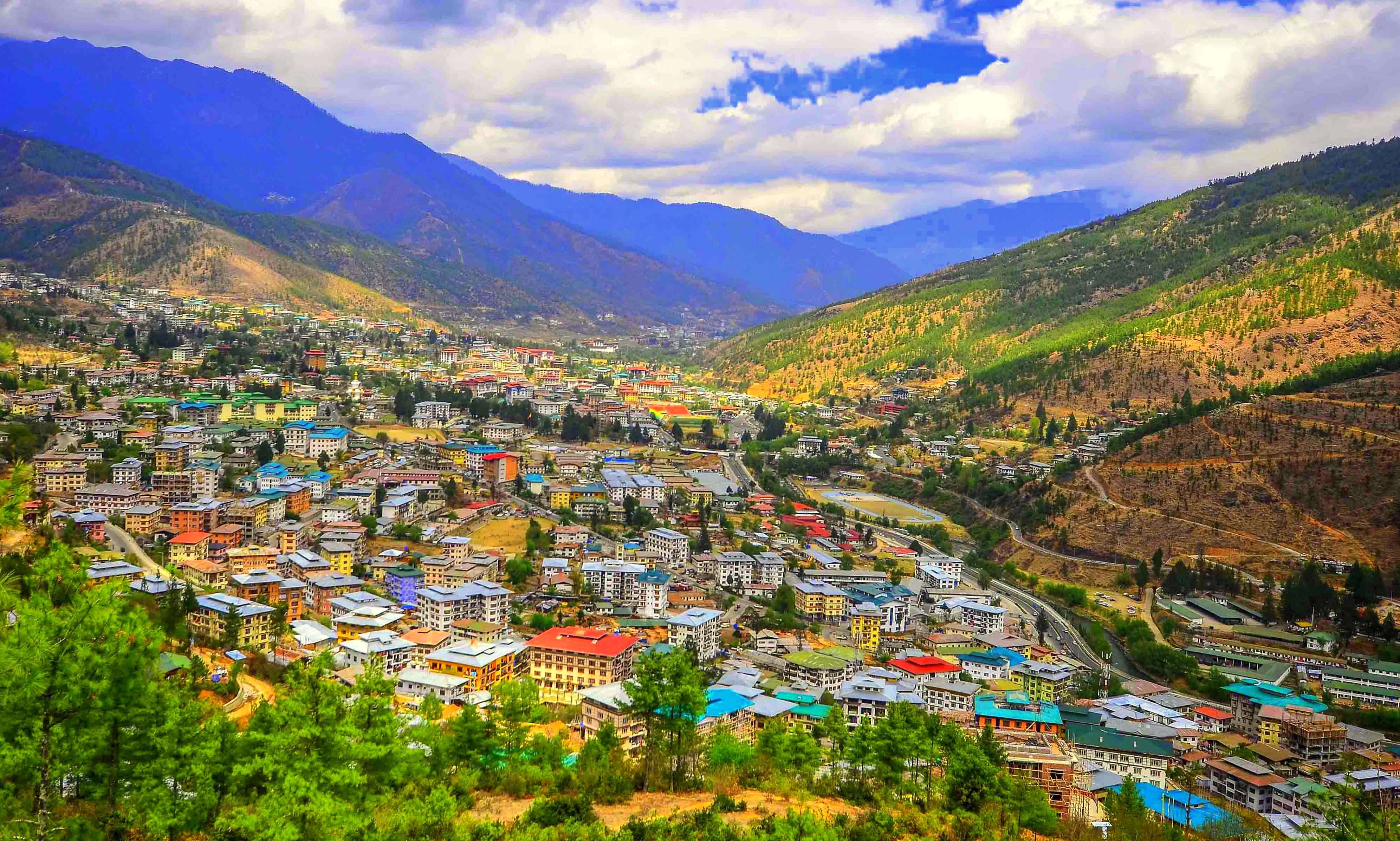
- Buddha Dordenma Statue: Dominating the skyline, this colossal golden statue of Buddha offers breathtaking views of the valley and symbolizes peace and prosperity. It’s one of the most iconic landmarks in Thimphu Valley attractions.
- Memorial Chorten: A significant religious monument, the Memorial Chorten is dedicated to the third king of Bhutan and is a focal point for local worshippers. The white stupa and surrounding grounds are perfect for a serene stroll and cultural immersion.
- Tashichho Dzong: This majestic fortress serves as the seat of the government and the residence of the King of Bhutan. The Dzong’s impressive architecture and beautifully manicured gardens make it a highlight of Thimphu.
- National Folk Heritage Museum: This museum offers a glimpse into traditional Bhutanese life with exhibits showcasing artifacts, clothing, and tools used in rural Bhutan. It provides valuable insight into the cultural heritage of Thimphu Valley.
- Takin Preserve: Home to the endangered Takin, Bhutan’s national animal, this preserve is an excellent place to see these unique creatures in a natural setting. It’s a great spot for wildlife enthusiasts and nature lovers.
- Thimphu Weekend Market: A vibrant and lively market where locals and visitors alike come to shop for fresh produce, handicrafts, and traditional Bhutanese goods. It’s an ideal place to experience the local culture and cuisine.
Thimphu Valley offers a captivating mix of cultural richness and modern development. With its iconic landmarks, traditional sites, and lively markets, this valley provides an engaging experience for those looking to explore the heart of Bhutan. Whether you're marveling at the Buddha Dordenma Statue or wandering through the National Folk Heritage Museum, Thimphu Valley is a destination that beautifully showcases the essence of Bhutanese life and history.
Punakha Valley
Punakha Valley is renowned for its stunning landscapes and historical significance. Once the capital of Bhutan, this picturesque valley is famous for its majestic monasteries, lush terraced fields, and vibrant local culture. As one of the top valleys in Bhutan, Punakha offers visitors a unique blend of natural beauty and cultural heritage.

- Punakha Dzong: An architectural masterpiece, the Punakha Dzong is a must-visit for anyone exploring Punakha Valley sights. This grand fortress, situated at the confluence of the Pho Chhu and Mo Chhu rivers, is renowned for its stunning design, intricate woodwork, and vibrant murals. It serves as both a monastic center and administrative headquarters, and hosts the annual Punakha Tshechu festival.
- Chimi Lhakhang: Known as the Fertility Temple, Chimi Lhakhang is a revered site dedicated to Lama Drukpa Kunley, known as the Divine Madman. The temple is surrounded by beautiful rice fields and is a popular pilgrimage site for couples seeking blessings for fertility.
- Khamsum Yulley Namgyal Chorten: This intricately designed stupa, located on a hill overlooking the valley, offers panoramic views of the surrounding landscapes. The chorten is adorned with detailed murals and serves as a testament to Bhutan’s rich artistic heritage.
- Punakha Suspension Bridge: One of the longest suspension bridges in Bhutan, it spans the Pho Chhu River and offers stunning views of the valley and the Dzong below. It’s a great spot for a leisurely walk and to enjoy the natural beauty of the region.
- Rice Paddies: The fertile land of Punakha is ideal for rice cultivation, creating a stunning patchwork of green fields that add to the valley's scenic charm. Visiting these fields provides insight into Bhutan’s agricultural traditions and local life.
- Punthang Dewachen Monastery: A lesser-known but significant spiritual site, this monastery offers a serene environment for meditation and reflection. It’s a peaceful retreat from the hustle and bustle of more popular tourist spots.
Punakha Valley is a treasure trove of natural beauty and cultural heritage, making it one of the most captivating destinations in Bhutan. With its iconic Punakha Dzong, charming temples, and picturesque landscapes, the valley provides a rich and immersive experience for travelers. Whether you're exploring the historic Dzong, walking across the suspension bridge, or enjoying the scenic rice paddies, Punakha Valley promises a memorable journey through Bhutan’s vibrant history and stunning natural scenery.
Haa Valley
Haa Valley is a serene and picturesque destination located in the western part of Bhutan. Known for its unspoiled landscapes and traditional charm, Haa offers a tranquil escape from the more traveled areas of the country. This lesser-visited gem is celebrated for its stunning natural beauty, cultural heritage, and authentic Bhutanese experience.
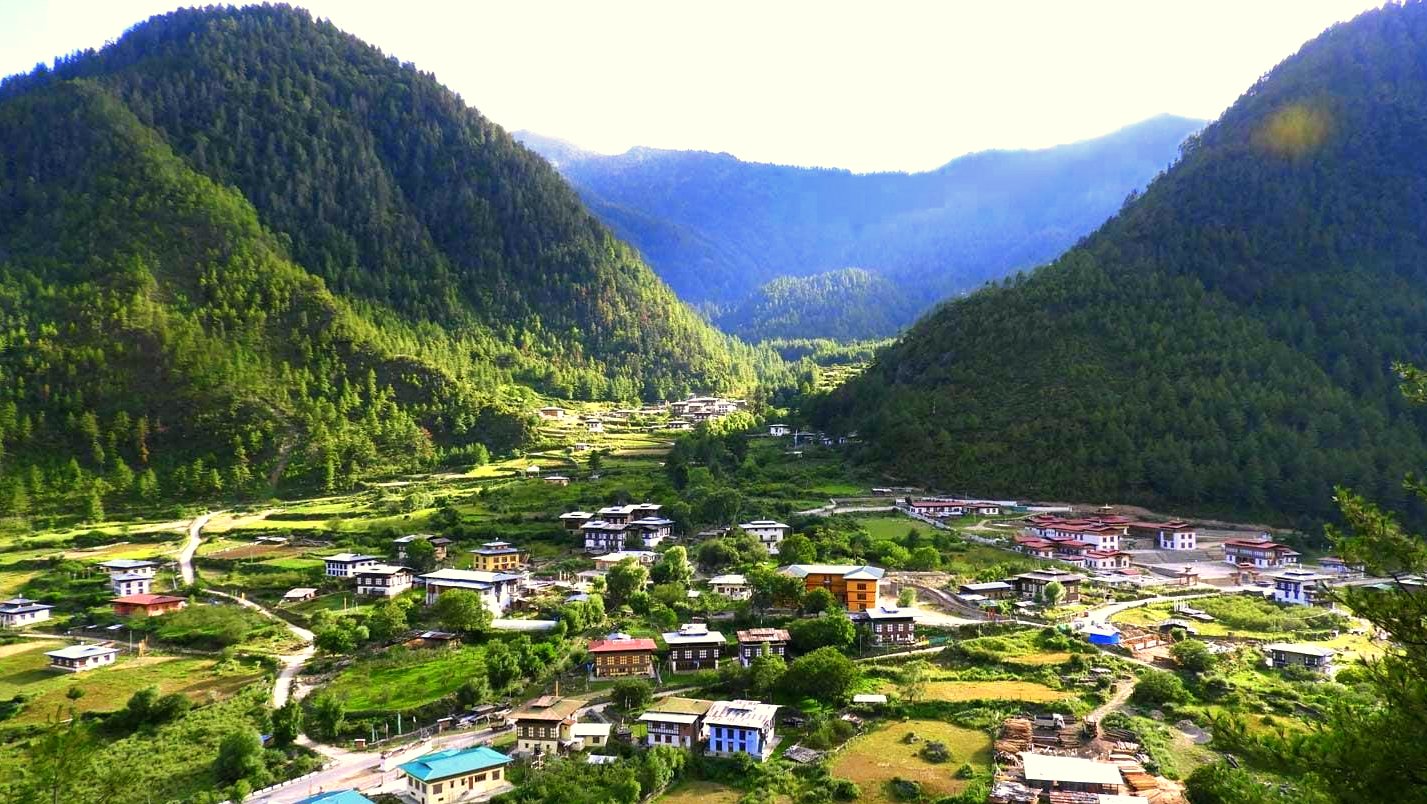
- Lhakhang Karpo and Lhakhang Nagpo: These ancient temples are key highlights of Haa Valley tourism. Lhakhang Karpo (White Temple) and Lhakhang Nagpo (Black Temple) hold historical and spiritual significance, believed to have been built in the 7th century. They offer insight into Bhutanese religious practices and the valley’s rich history.
- Haa Summer Festival: This annual festival showcases traditional Bhutanese culture with vibrant dances, folk songs, and local rituals. It’s an excellent opportunity to experience the local customs and celebrate Bhutanese heritage in a festive setting.
- Scenic Landscapes: Haa Valley is renowned for its pristine natural beauty, including rolling hills, alpine forests, and clear blue skies. The valley’s lush green fields and untouched environment provide a perfect backdrop for photography and relaxation.
- Traditional Bhutanese Villages: Explore charming villages like Ura and Haa, where you can see traditional Bhutanese architecture and daily life. These villages offer a glimpse into the rural lifestyle and cultural practices of the Haa region.
- Haa Town: A quaint town with traditional buildings and local markets. It’s a great place to interact with locals, sample Bhutanese cuisine, and shop for handmade crafts and textiles.
- Chhuzom and Haa River: The rivers that flow through Haa Valley add to its natural charm. Enjoy a peaceful stroll along the riverbanks or take in the scenic views from various vantage points.
Haa Valley is a hidden gem that offers a peaceful retreat into Bhutan’s natural and cultural splendor. With its ancient temples, vibrant festivals, and breathtaking landscapes, the valley provides a unique and authentic Bhutanese experience. Whether you're attending the Haa Summer Festival or exploring traditional villages, Haa Valley promises a tranquil and enriching journey through one of Bhutan’s most enchanting regions.
Bumthang Valley
Bumthang Valley is often regarded as the spiritual heartland of Bhutan, celebrated for its profound cultural and religious significance. Situated in central Bhutan, this picturesque valley is a haven for those seeking a deeper understanding of Bhutanese traditions and spiritual practices. With its ancient monasteries, sacred sites, and stunning landscapes, Bumthang offers an immersive experience into the essence of Bhutanese heritage.
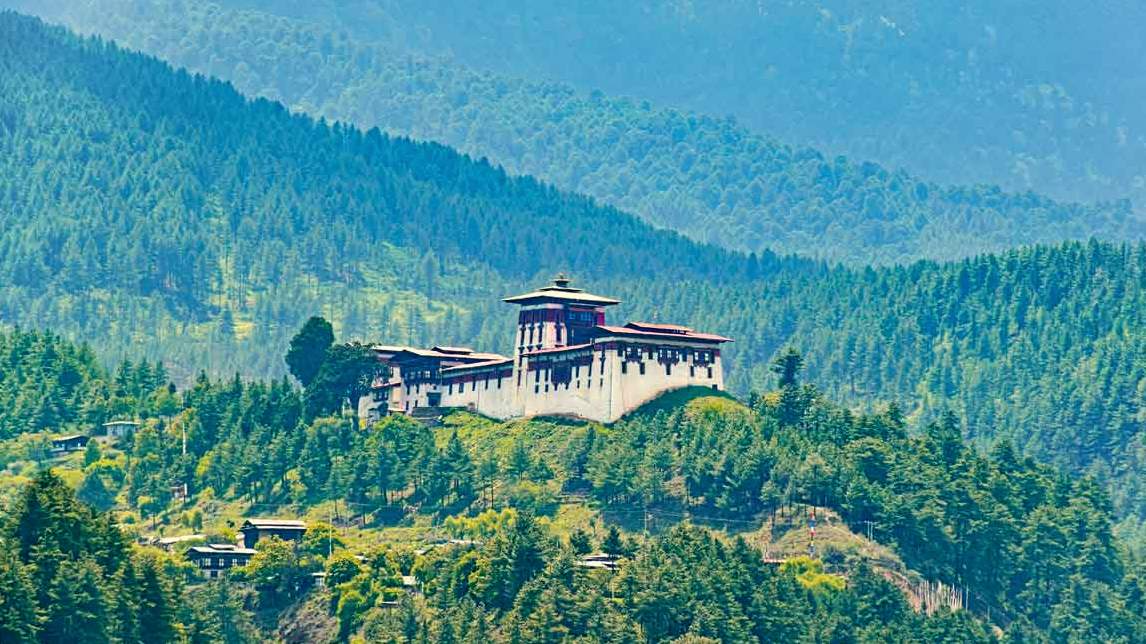
- Jambay Lhakhang: One of Bhutan's oldest temples, Jambay Lhakhang is renowned for its historical and spiritual importance. Believed to have been built in the 7th century, it is a key site for various religious festivals and rituals.
- Kurjey Lhakhang: This sacred site is associated with Guru Rinpoche, who is said to have meditated here. The complex comprises three temples and is an important pilgrimage site for Bhutanese Buddhists. The site’s serene setting and historical significance make it a must-visit.
- Tamshing Lhakhang: Founded by Pema Lingpa, a revered lama and treasure revealer, Tamshing Lhakhang is known for its rich religious murals and sacred relics. It’s a key site for understanding Bhutanese spirituality and tradition.
- Bumthang Cultural Museum: This museum offers a comprehensive look into the cultural heritage of the Bumthang region. Exhibits include traditional artifacts, clothing, and tools, providing insights into the region’s history and daily life.
- Mebar Tsho (Burning Lake): This sacred lake is associated with Pema Lingpa and is a site of pilgrimage and legend. According to tradition, the lake is where Pema Lingpa discovered sacred treasures.
- Jakar Dzong: Also known as the "Castle of the White Bird," Jakar Dzong is an impressive fortress with stunning views of the valley. It serves as both a religious and administrative center for the region.
- Yathra Weaving: Bumthang is renowned for its traditional weaving of Yathra textiles, which are colorful and intricately designed. Visiting local weaving centers provides a unique opportunity to witness this traditional craft.
Bumthang Valley stands out as a spiritual and cultural treasure within Bhutan, offering an enriching journey through its sacred sites, historical temples, and traditional practices. Whether you’re exploring ancient monasteries like Kurjey Lhakhang or marveling at the intricate Yathra textiles, Bumthang Valley provides a profound insight into Bhutanese culture and spirituality. For those seeking to experience the heart of Bhutan’s spiritual legacy, Bumthang is an essential destination that promises a deeply rewarding adventure.
Phobjikha Valley
Phobjikha Valley is renowned for its breathtaking beauty and tranquil environment, making it one of Bhutan’s most serene and captivating destinations. Located in central Bhutan, this wide glacial valley is celebrated for its rich biodiversity, traditional culture, and stunning natural landscapes. As a key site for wildlife conservation and a haven for nature enthusiasts, Phobjikha offers a unique blend of natural splendor and cultural heritage.

- Black-Necked Cranes: The valley is famous for being the winter habitat of the endangered black-necked cranes. These majestic birds migrate from Tibet and can be seen in the valley from late October to early March. The Phobjikha Valley is a crucial site for their conservation, and visitors can observe these cranes in their natural habitat.
- Gangtey Monastery: This important Nyingma Buddhist monastery overlooks the valley and offers stunning views of the surrounding landscape. Founded by Pema Lingpa in the 17th century, Gangtey Monastery is a significant spiritual site and provides insights into Bhutanese religious practices.
- Phobjikha Nature Trail: This scenic hiking trail offers panoramic views of the valley and is an excellent way to explore the region’s natural beauty. The trail takes you through diverse landscapes, including forests, meadows, and rivers, providing opportunities for birdwatching and wildlife spotting.
- Traditional Villages: Phobjikha is home to traditional Bhutanese villages where visitors can experience local life and culture. The villages offer a glimpse into rural Bhutanese customs, traditional architecture, and the warm hospitality of the locals.
- Vibrant Festivals: The valley hosts the annual Gangtey Tsechu festival, which features traditional dances, rituals, and cultural performances. This colorful event is an excellent opportunity to witness Bhutanese culture and religious traditions in a festive setting.
- Scenic Landscapes: Phobjikha Valley is characterized by its picturesque meadows, lush forests, and serene river valleys. The wide-open spaces and pristine environment make it a perfect destination for nature lovers and those seeking a peaceful retreat.
Phobjikha Valley offers a unique and serene escape into Bhutan’s natural and cultural wonders. With its rich wildlife, including the endangered black-necked cranes, and its stunning landscapes, the valley provides a perfect setting for relaxation and exploration. Whether you're visiting the historic Gangtey Monastery, hiking the Phobjikha Nature Trail, or immersing yourself in local traditions, Phobjikha Valley promises an enriching and tranquil experience amidst Bhutan’s spectacular natural beauty.
Ura Valley
Ura Valley is a captivating destination in central Bhutan, known for its rich cultural heritage and traditional charm. Nestled in the Bumthang district, this high-altitude valley offers a serene escape with its unique blend of history, culture, and stunning natural beauty. Ura Valley is a showcase of Bhutanese traditions and provides an authentic glimpse into rural life in Bhutan.
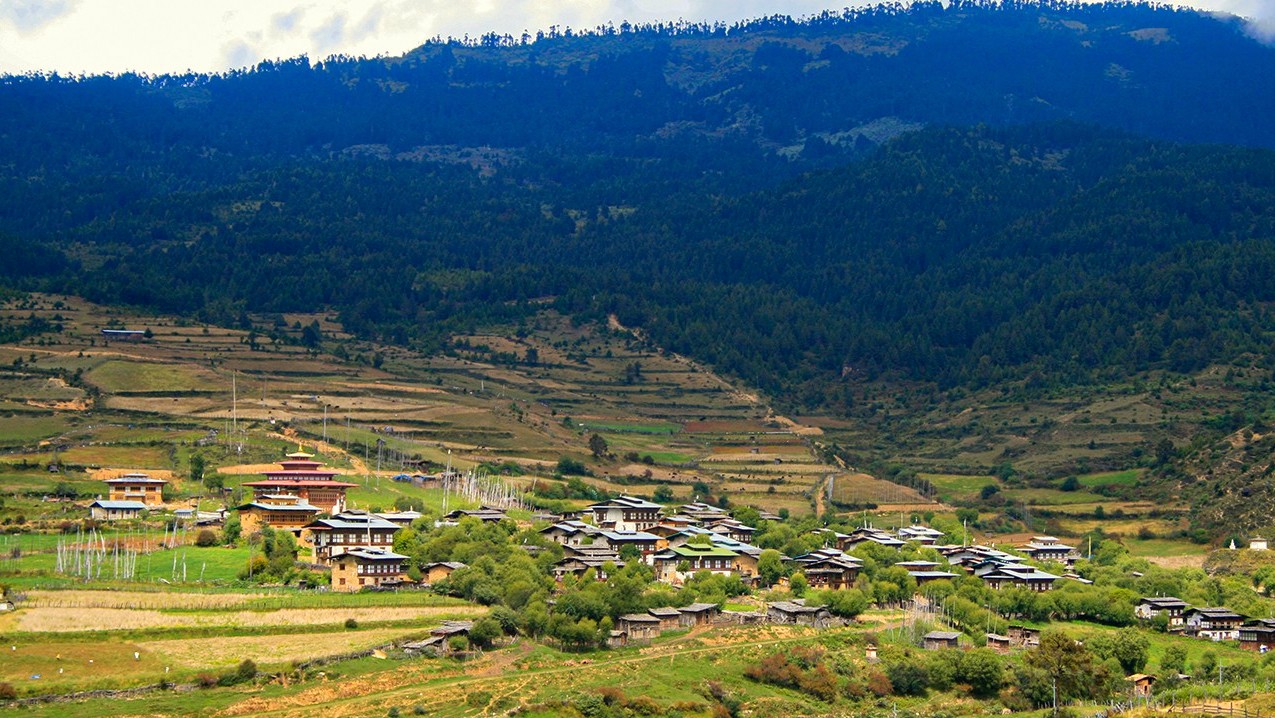
- Ura Lhakhang: This ancient temple is a significant cultural and religious site in Ura Valley. Built in the 7th century, Ura Lhakhang is an important pilgrimage destination and offers a deep insight into Bhutanese spirituality and history. The temple is adorned with traditional Bhutanese artwork and serves as a focal point for local religious practices.
- Ura Village: The village itself is renowned for its traditional Bhutanese architecture and well-preserved cultural heritage. Walking through the village offers a unique opportunity to experience the daily life of Bhutanese farmers and craftsmen, and to admire the traditional stone houses and community practices.
- Ura Yakchoe Festival: This vibrant festival, held annually in the Ura Valley, is a celebration of Bhutanese culture and religion. The festival features traditional dances, rituals, and performances, providing a lively and colorful display of Bhutanese traditions and local customs.
- Scenic Landscapes: Ura Valley is known for its stunning natural beauty, including rolling hills, lush fields, and panoramic views of the surrounding mountains. The valley’s high altitude and pristine environment offer excellent opportunities for hiking and exploring the natural landscape.
- Traditional Craftsmanship: The valley is also known for its traditional crafts, including weaving and woodwork. Visiting local workshops and craft centers provides insight into the skills and artistry of Bhutanese artisans.
- Cultural Heritage: Ura Valley is a living testament to Bhutan’s rich cultural heritage, with well-preserved traditions and practices that offer a glimpse into the country’s historical and spiritual legacy.
Ura Valley stands out as a cultural gem within Bhutan, offering a unique blend of historical significance, traditional architecture, and stunning natural scenery. Whether you're exploring the ancient Ura Lhakhang, participating in the lively Ura Yakchoe Festival, or simply enjoying the valley’s serene landscapes, Ura Valley provides an authentic and enriching experience that captures the essence of Bhutanese culture and heritage.
Best Time to Visit Bhutan’s Valleys
Bhutan experiences four distinct seasons, each offering unique experiences and opportunities to explore the country's breathtaking landscapes and cultural heritage. Here's what you can expect in each season when visiting the valleys of Bhutan:
Spring (March to May)
- Weather: Spring is a delightful time to visit Bhutan, with mild temperatures and blooming flora. The valleys come alive with vibrant colors as flowers and rhododendrons bloom.
- What to Expect: The weather is generally pleasant, making it ideal for outdoor activities such as hiking and sightseeing. Spring is also the time for many festivals and cultural events, offering a glimpse into Bhutanese traditions and celebrations.
Summer (June to August)
- Weather: Summer in Bhutan is characterized by warmer temperatures and increased humidity. This is also the monsoon season, bringing frequent rain showers and lush green landscapes.
- What to Expect: The valleys are lush and verdant, with dramatic waterfalls and vibrant greenery. While rain can be frequent, it often comes in short bursts, leaving plenty of time for exploration. The summer season also sees fewer tourists, offering a more tranquil experience.
Autumn (September to November)
- Weather: Autumn is one of the best times to visit Bhutan, with clear skies, crisp air, and comfortable temperatures. The valleys are bathed in golden hues as the foliage changes color.
- What to Expect: The weather is ideal for sightseeing and trekking, with excellent visibility and pleasant conditions. Autumn is also the season for major festivals, including the famous Tsechu festivals, where you can experience traditional dances and cultural performances.
Winter (December to February)
- Weather: Winter brings cooler temperatures and occasional snowfall, particularly in the higher elevations. The valleys are often clear and crisp, with stunning views of snow-capped mountains.
- What to Expect: Winter is a quieter time for tourism, with fewer visitors and serene landscapes. It’s an excellent season for those who enjoy crisp air and clear skies. However, be prepared for colder temperatures, especially in the mornings and evenings.
Each season in Bhutan offers a different experience, whether you’re interested in the vibrant blooms of spring, the lush greenery of summer, the clear skies of autumn, or the crisp air of winter. Choosing the best time to visit depends on your preferences for weather and activities, ensuring that you can enjoy the valleys in their full seasonal splendor.
Essential Tips for Visiting Bhutan’s Top Valleys
Exploring Bhutan’s picturesque valleys offers a unique blend of natural beauty and cultural heritage. Here are some essential tips to ensure a smooth and memorable visit to the Top 7 Valleys in Bhutan:
Obtain a Visa and Travel Permit
- Visa Requirement: All tourists (except nationals from India, Bangladesh, and the Maldives) need a visa to enter Bhutan. Arrange this through a licensed Bhutanese tour operator.
- Travel Permit: You will need a travel permit for certain areas, which your tour operator will help you obtain.
Plan Your Itinerary Wisely
- Seasonal Considerations: Each season offers different experiences, so plan your visit according to the weather and the activities you want to enjoy. Spring and autumn are generally the most favorable times for travel.
- Festival Dates: Check local festival dates as they offer a unique cultural experience. However, festivals can also mean larger crowds and higher prices.
Pack Appropriately
- Layered Clothing: Weather can vary greatly, so pack layered clothing to adapt to changing temperatures. Include warm layers for cooler evenings and light clothing for daytime.
- Comfortable Footwear: Wear sturdy, comfortable shoes for hiking and exploring the valleys.
Respect Local Customs and Traditions
- Dress Modestly: Bhutanese culture values modesty, so dress conservatively, especially when visiting religious sites. Avoid wearing revealing or flashy clothing.
- Behavior in Monasteries: Show respect in religious sites by removing hats, speaking quietly, and following local customs.
Stay Hydrated and Eat Safely
- Hydration: Drink plenty of water to stay hydrated, especially when engaging in physical activities or hiking.
- Local Cuisine: Sample local dishes but ensure they are prepared hygienically to avoid any stomach issues.
Prepare for Altitude
- Acclimatization: Some valleys are at high altitudes, which can lead to altitude sickness. Take it slow, stay hydrated, and allow time for acclimatization.
Be Mindful of the Environment
- Leave No Trace: Respect the natural beauty by not littering and following eco-friendly practices. Use designated waste disposal facilities.
- Wildlife Conservation: Avoid disturbing wildlife and adhere to guidelines set by local authorities, especially in areas like Phobjikha Valley where black-necked cranes are protected.
Communicate and Connect
- Language: While English is widely understood, learning a few basic phrases in Dzongkha (the national language) can be appreciated.
- Connectivity: Internet and mobile connectivity may be limited in remote areas. Prepare for periods without digital access and enjoy the opportunity to disconnect.
Be Patient and Flexible
- Travel Delays: Be prepared for potential delays due to weather or road conditions. Flexibility in your itinerary can help accommodate any unexpected changes.
Book Through a Reputable Tour Operator
- Local Expertise: Choose a licensed Bhutanese tour operator who can provide detailed guidance, handle logistics, and ensure you get the most out of your visit.
By following these essential tips, you can ensure a rewarding and enjoyable experience while exploring Bhutan’s stunning valleys. Embrace the unique blend of natural beauty and cultural heritage, and make the most of your journey through this enchanting Himalayan kingdom.
Exploring the Top 7 Valleys in Bhutan offers a captivating journey through some of the most stunning and culturally rich landscapes in the world. From the serene beauty of Phobjikha Valley to the spiritual depth of Bumthang Valley, each valley provides a unique blend of natural splendor and Bhutanese heritage. Whether marveling at the majestic Punakha Dzong, discovering the tranquil Haa Valley, or experiencing the vibrant culture of Ura Valley, these destinations promise an unforgettable adventure. Each region reveals a distinct perspective on Bhutan’s diverse landscapes and rich traditions, making them essential for any traveler seeking a profound connection with this Himalayan kingdom. Embrace the opportunity to witness Bhutan’s unique way of life and create lasting memories in these extraordinary valleys.
FAQs of the Top 7 Valleys in Bhutan
Q: What are the Top 7 Valleys in Bhutan?
A: The Top 7 Valleys in Bhutan include Paro Valley, Thimphu Valley, Punakha Valley, Haa Valley, Bumthang Valley, Phobjikha Valley, and Ura Valley. Each valley offers unique natural beauty and cultural experiences.
Q: When is the best time to visit the valleys in Bhutan?
A: The best times to visit Bhutan’s valleys are during spring (March to May) and autumn (September to November) when the weather is pleasant and clear. Summer (June to August) is also good but can be rainy, while winter (December to February) offers crisp air and fewer crowds.
Q: Do I need a visa to visit Bhutan?
A: Yes, most travelers need a visa to enter Bhutan. You must arrange your visa through a licensed Bhutanese tour operator who will handle the application process for you.
Q: What should I pack for a visit to Bhutan’s valleys?
A: Pack layered clothing to adapt to varying temperatures, comfortable hiking shoes, and essentials like sunscreen and a hat. Include rain gear if traveling in the summer. For visits to religious sites, modest clothing is required.
Q: Are there any cultural customs I should be aware of?
A: Yes, dress modestly when visiting religious sites, remove your hat, and avoid public displays of affection. Always follow local customs and be respectful of religious practices and traditions.
Q: Can I explore the valleys on my own or do I need a guide?
A: It is recommended to explore Bhutan’s valleys with a licensed tour guide due to local regulations and to enrich your experience with cultural insights. Independent travel is generally not permitted for tourists.
Q: What types of activities can I do in these valleys?
A: Activities include visiting historic monasteries and dzongs, participating in local festivals, hiking scenic trails, exploring traditional villages, and observing wildlife such as the black-necked cranes in Phobjikha Valley.
Q: How do I get around the valleys in Bhutan?
A: Travel between the valleys is typically done by road in a private vehicle arranged through your tour operator. Some valleys may be accessible by domestic flights or public transportation, but private transfers are more convenient.
Q: Are there accommodations available in the valleys?
A: Yes, there are various accommodation options ranging from luxury hotels to more modest guesthouses and lodges. It’s best to book accommodations in advance, especially during peak seasons and festival times.
Q: What is the altitude of the valleys, and how should I prepare for it?
A: The altitude varies, with some valleys like Paro and Bumthang at higher elevations. To prepare, stay hydrated, avoid strenuous activities initially, and allow time to acclimate to the altitude.


